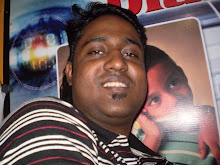Friday, December 11, 2009
Saturday, December 5, 2009
Friday, December 4, 2009

Sri Lanka (from the Sanskrit “Venerable Island”[citation needed]), officially the Democratic Socialist Republic of Sri Lanka (pronounced /ˌʃriːˈlɑːŋkɑː/, Sinhala: , Tamil: இலங்கை; known as Ceylon (/sɪˈlɒn/) before 1972 and as Taprobane (/təˈprɒbəniː/) in ancient times), is an island country in South Asia, located about 31 kilometres (19.3 mi) off the southern coast of India. It is home to around twenty million people.
As a result of its location in the path of major sea routes, Sri Lanka is a strategic naval link between West Asia and South East Asia.[citation needed] It has also been a center of the Buddhist religion and culture from ancient times as well as being a bastion of Hinduism.[8] The Sinhalese community forms the majority of the population; Tamils, who are concentrated in the north and east of the island, form the largest ethnic minority. Other communities include Moors, Burghers, Kaffirs, Malays and the indigenous Wanniyala-Aetto people.
The country is famous for the production and export of tea, coffee, coconuts, rubber and cinnamon - which is native to the country.[9] The natural beauty of Sri Lanka's tropical forests, beaches and landscape,  as well as its rich cultural heritage, make it a world famous tourist destination.[citation needed] The island also boasts the first female Prime Minister in the world, Sirimavo Bandaranaike.[10]
as well as its rich cultural heritage, make it a world famous tourist destination.[citation needed] The island also boasts the first female Prime Minister in the world, Sirimavo Bandaranaike.[10]
After over two thousand years of rule by local kingdoms, parts of Sri Lanka were colonized by Portugal and the Netherlands beginning in the 16th century, before control of the entire country was ceded to the British Empire in 1815.[citation needed] During World War II, Sri Lanka served as an important base for Allied forces in the fight against the Japanese Empire.[11] A nationalist political movement arose in the country in the early 20th century with the aim of obtaining political independence, which was eventually granted by the British after peaceful negotiations in 1948.
 In ancient times, Sri Lanka was known by a variety of names: ancient Greek geographers called it Taprobane[12] and Arabs referred to it as Serendib (the origin of the word "serendipity").[13] Ceilão was the name given to Sri Lanka by the Portuguese when they arrived in 1505,[14] which was transliterated into English as Ceylon.[15] As a British colony, the island was known as Ceylon, and achieved independence under the name Ceylon in 1948. In 1972, the official name of the country was changed to "Free, Sovereign and Independent Republic of Sri Lanka" (in Sinhala:
In ancient times, Sri Lanka was known by a variety of names: ancient Greek geographers called it Taprobane[12] and Arabs referred to it as Serendib (the origin of the word "serendipity").[13] Ceilão was the name given to Sri Lanka by the Portuguese when they arrived in 1505,[14] which was transliterated into English as Ceylon.[15] As a British colony, the island was known as Ceylon, and achieved independence under the name Ceylon in 1948. In 1972, the official name of the country was changed to "Free, Sovereign and Independent Republic of Sri Lanka" (in Sinhala: 





